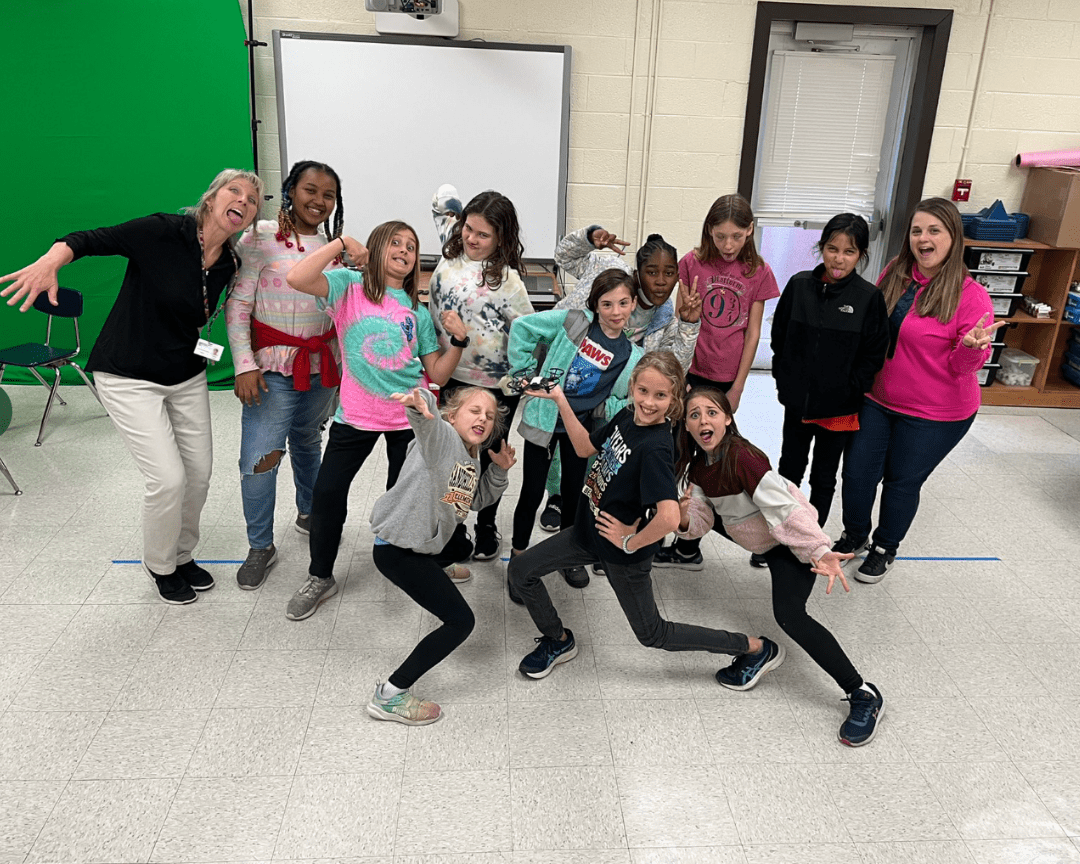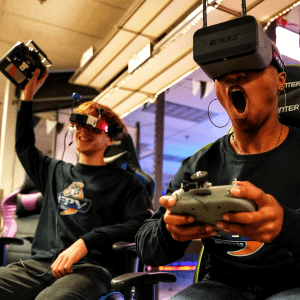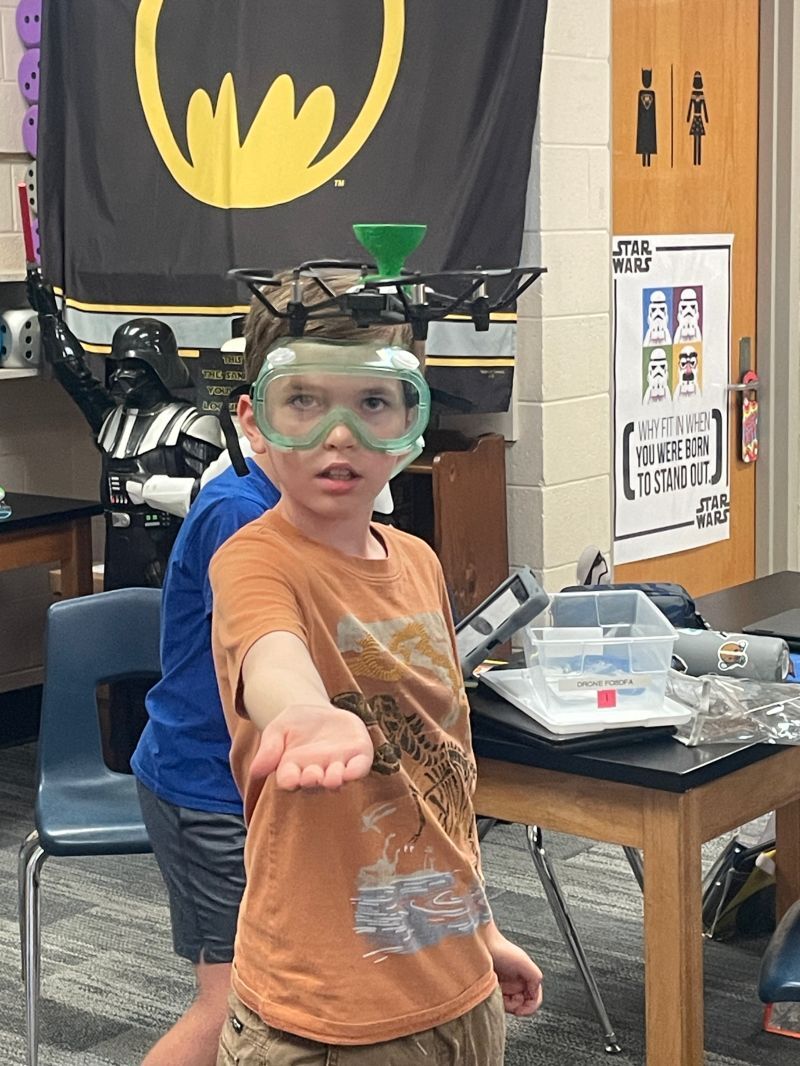When you’re introducing drones to your classroom, there are a few things you (as the educator or supervisor) and the students must clear up before any drone projects occur.
Starting a new drone STEM curriculum with students is a fun, fulfilling way to engage kids in hands-on learning. In my experience, drones give students a way to apply science, technology, engineering, and math concepts to exercises that encourage both responsibilities and play.
If you need help managing your classroom when the drones come out, keep reading to learn about:
- Establishing rules and safety for drone use
- Distinguishing the field of drone flight at your school
- Setting expectations for an educational drone mission
- Facilitating follow-up discussions with your students
- What kids learn when using drones
Teaching Drone Safety and Setting Rules
Before kids even get their hands on drones, we always go over ground rules, expectations, and safety requirements. All kids should have a clear understanding of rules and procedures before drone operation is introduced.
Drone Pilot Rules for Students
- Understand your drone (before a flight, teachers must explain the drone’s functions and controls).
- Stand behind the designated flight zone at all times.
- Never walk in the field of flight until all drones have landed and you have teacher permission.
- Designate pilot, safety manager, and visual observer roles in depth.
- Maintain communication and eye contact between pilot team members.
- When touching the drone, the iPad or controller must be set aside for safety. This makes sure nobody accidentally presses “launch” or activates the drone unexpectedly, which can result in injury or drone damage.
- Keep the drone in sight at all times during flight.
- Pilots must remain alert and focused at all times.
Before each flight session, we go over the rules to make sure everyone remembers what to do (we all know kids can forget rules when they’re excited).
Drone Safety Slides
To help remind kids of the rules and expectations, you can create drone safety slides to use in the classroom or outside on the playground. This gives them a visual reminder and a step-by-step process to follow.
Encourage Student Participation
In my drone lessons, I like to remind kids that every student has an important role to play in the team. Whether it’s a kid’s turn to pilot, observe and guide, or ensure safe operation procedures observe, their input and experience matter to the overall lesson.
Drone Team Roles
Because kids get excited over drones (I mean, who doesn’t like flying toys?), they can be quick to demand their turn. My method is to introduce drones to kids in real-world drone teams. This way there is never one student allowed to manage a drone on their own.
- Remote Pilot in Command (PIC): The PIC is the team lead. He or she communicates the flight plan to the team and uses the iPad or controller to launch, fly, and land the drone.
- Visual Observer (VO): The VO moves with the drone and looks for obstacles or hazards that the Pilot cannot see. They also coach on how or where to fly.
- Safety Manager: The Safety Manager ensures that all pre-flight and in-flight safety protocols are followed. They inspect the drone for damage (broken props? Replace them!) and manage batteries.
How Many Kids Belong in a Drone Class?
I’ve worked with as few as six students at a time and as many as 30 students. With a set of four drones, I usually break kids up into four groups of three members.
Where is the Best Place to Teach Drones?
A beginner drone class can be taught in a classroom, in enrichment program rooms, in the library, or even in hallways. Anywhere indoors works for teaching kids how to fly drones.
What Challenges do Drone Educators Face?
Some of the biggest challenges of holding drone classes for students are:
- Managing enthusiasm and excitement of a large group
- Facilitating conflict resolution
- Knowing how to effectively teach drones in a classroom
- Interference between multiple drone signals
If your classroom needs help with any of these challenges, I recommend reaching out to a kids’ drone program to host a class at your school. It’s an amazing way to get extra help from experts while providing exciting drone classes to your class.
How do Kids Learn in Drone Lessons?
I like to help kids experience a lot of engineering and building tasks before flying their drones. This can look like mapping out the drone’s mission and flight pattern, building custom drones, and discussing educated guesses about what might happen with the drone.
You can learn more about how kids learn with drones here: 8 STEM Concepts Kids Learn Through Drones
The Importance of Follow-Up Lessons
Don’t overlook the reflection and follow-up discussion at the end of a drone lesson for kids. I find kids often have a lot to say. In my experience, it can be surprising to see how kids troubleshoot and resolve simple mistakes on their own. They can come up with ideas that many adults might say, “Oh, I wouldn’t have thought about that!”
Here’s one example of a recent drone class:
We made a candy bomber drone to replicate a World War II Berlin mission. The kids had to make drone droppers so they could fly and drop candy to the kids below. A lot of the parachutes these students made ended up being too heavy, so the drones weren’t able to carry them in flight. This made the kids go back to the engineering phase and rethink new ways to make parachutes that could safely land candy.
After the exercise, it’s important to ask the students:
- What worked well?
- What didn’t work well?
- What might you do differently next time?
- Why do you think [a certain situation] happened with this drone?
The main point of doing these drone lessons with kids is to introduce new concepts to them that they can think about in other areas of life.
Resources for Educators Teaching Drones to Kids
A sure way to help your kids learn? Prepare your lessons with an expert drone curriculum plan for elementary students. At Drone Legends, we love igniting the love of STEM in teachers and students with the use of a drone curriculum that’s simple to set up, enjoyable, and effective. Want to make the most out of your drone classroom?
Reach out to us today so we can help you create legends at your school.
You can follow this blog’s author, Carrie Robledo, here on Twitter!




